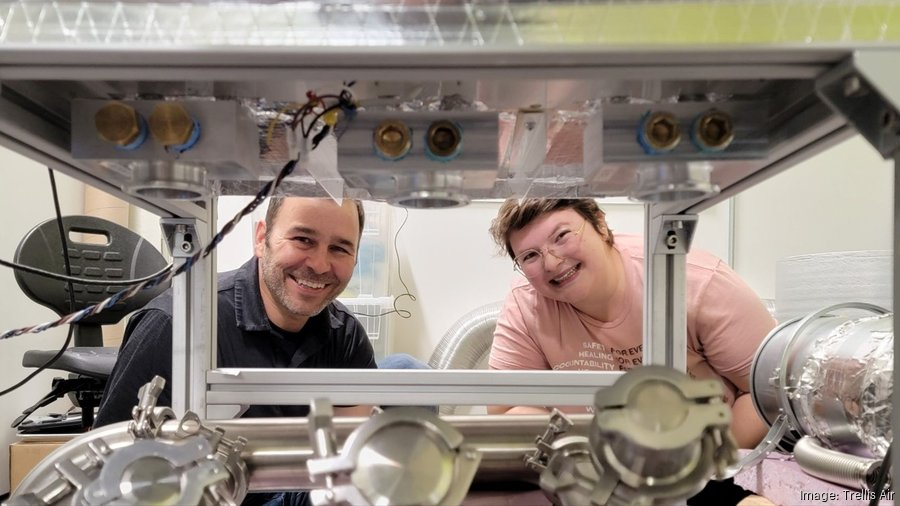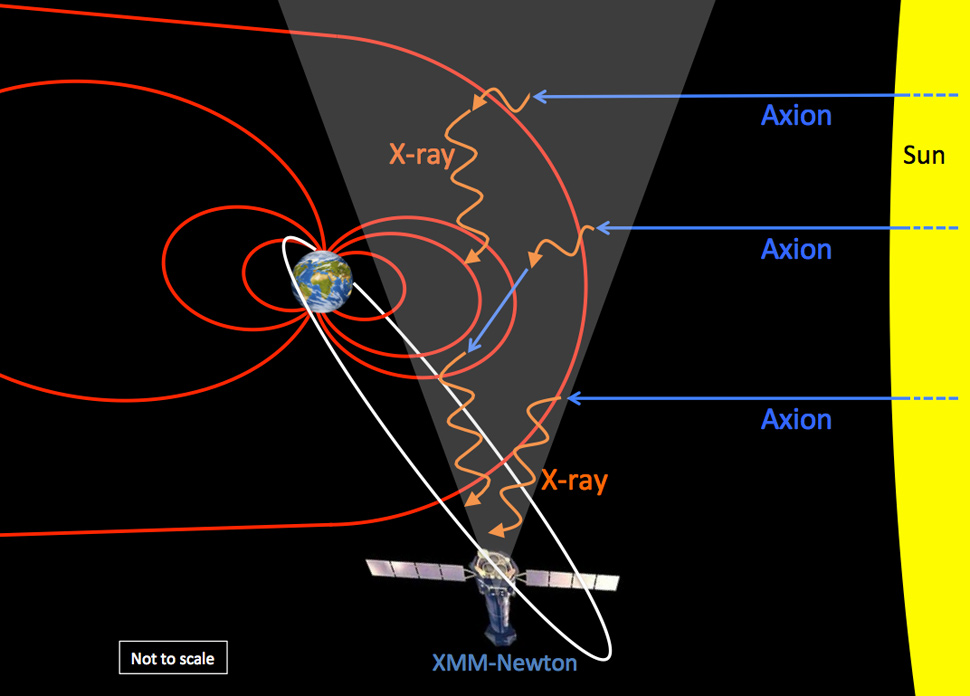Axions, theoretical particles that have captured the attention of physicists, play a crucial role in our understanding of dark matter, the elusive substance believed to comprise the majority of the universe’s mass. In recent years, researchers have intensified their hunt for axions, as confirming their existence could revolutionize particle physics and enhance our grasp of cosmic phenomena. With their unique characteristics, axions are hypothesized to be a form of dark matter, potentially offering answers to foundational questions about the universe. A groundbreaking experiment conducted by a collaborative team from Harvard University and King’s College London has taken significant strides in identifying these elusive particles by utilizing quasiparticles as detection tools. This important advancement not only underscores the relevance of axion dark matter in ongoing scientific inquiry but also paves the way for innovative quantum technologies that could emerge from this research.
Axions, often referred to as potential candidates for dark matter, are fascinating entities that could fundamentally alter our comprehension of the universe. These elusive particles are not directly observable, yet the implications of their existence resonate through various branches of physics, notably in the realms of particle physics and cosmology. The latest developments in research have pivoted around these elusive quasiparticles, with scientists creatively employing them as proxies to explore the mysteries of dark matter. With increasing evidence supporting the theoretical framework of axions, the scientific community is poised on the brink of potentially groundbreaking discoveries that may unlock new avenues in quantum technologies. The convergence of interdisciplinary research focusing on axions represents a promising frontier in the quest to decipher the cosmos.
Understanding Dark Matter and Axions
Dark matter remains one of the most enigmatic components of our universe, constituting approximately 85 percent of its total mass yet eluding direct detection. This mysterious substance is a hot topic in particle physics, where researchers explore various theoretical particles that may comprise dark matter. Among these, axions stand out due to their unique predicted properties, which could simplify some of the most complex equations in physics. The search for these elusive particles is crucial not only for understanding the composition of the universe but also for gaining insights into fundamental physical laws.
Axions are hypothesized subatomic particles that, if detected, would provide compelling evidence for the existence of dark matter. They are predicted to have extremely low mass and interact very weakly with ordinary matter, making them exceptionally hard to observe. Recent experimental breakthroughs, particularly those involving the use of quasiparticles, have opened up new avenues for axion detection. By simulating axion interactions through quasiparticles, scientists hope to create innovative methodologies for hunting down these particles.
The Role of Quasiparticles in Axion Detection
Quasiparticles serve as a bridge between complex theoretical concepts and practical experimentation in the realm of particle physics. The recent findings from the Harvard and King’s College London collaboration indicate that by using these quasiparticles, researchers can simulate the presence of axions in a controlled environment. This approach effectively transforms abstract hypotheses into tangible phenomena, enabling direct observation and investigation of axion properties through advanced techniques in laser optics.
By harnessing the unique characteristics of materials such as manganese bismuth telluride, researchers are able to create environments where axion quasiparticles can be cultivated and analyzed. This material not only exhibits novel electronic properties but also allows for precision manipulation at atomic levels. Scientists are investigating how these quasiparticles behave under various conditions, which is essential in understanding their potential role as detectors of actual axion particles in the quest to unravel dark matter.
Innovations in Quantum Technologies
The exploration of axion quasiparticles is not solely limited to dark matter detection; it also carries significant implications for the development of cutting-edge quantum technologies. The concept of axion polaritons, a new form of light-matter interaction arising from these quasiparticles, exemplifies the potential impact of this research on optical applications. This advancement could pave the way for technological breakthroughs in areas such as quantum computing and information processing, where precise control at the quantum level is paramount.
As research progresses, the integration of condensed-matter physics with quantum technologies will likely yield a wealth of new applications. The findings reported by the team underline the interdisciplinary potential of harnessing new materials and quantum properties in addressing some of the most fundamental questions in particle physics. With advancements in experimental techniques, we can expect exciting developments in quantum technologies that will deepen our understanding of particles and their interactions.
Interdisciplinary Approaches to Particle Physics
The success of recent experiments searching for axions highlights the necessity for interdisciplinary collaboration in modern scientific research. By bringing together experts from condensed-matter physics, material chemistry, and high-energy physics, the team has employed a comprehensive strategy to explore the properties of axion quasiparticles. This holistic approach allows for a richer understanding of the interactions between different physical disciplines, enhancing the overall scientific inquiry into dark matter and particle physics.
Such collaborative efforts are essential in navigating the complexities of particle interactions and the elusive nature of dark matter. As researchers combine their strengths and expertise, they not only maximize the effectiveness of their investigations but also generate innovative ideas, pushing the boundaries of current scientific knowledge. This model of interdisciplinary research is crucial in tackling longstanding mysteries, such as the nature of dark matter and the quest for axions.
Future Directions in Axion Research
Looking forward, the quest to detect axion dark matter is set to accelerate with promising new methodologies emerging from recent studies. With the foundation laid by current experiments, scientists are now refining their techniques to enhance the precision of axion quasiparticle observations. This ongoing research is key to confirming the existence of axions as a fundamental component of dark matter and will open up new avenues for experimental innovations in particle physics.
The ambitious goal of probing axion dark matter encourages researchers to push the boundaries of their experimental designs. Enhanced detectors capable of tuning into the specific frequencies of axion signals will provide greater sensitivity to this elusive form of matter. As research progresses, the potential discoveries may not only answer fundamental questions about the universe’s composition but also revolutionize our understanding of physics at a fundamental level.
The Quest for a Cosmic Car Radio
The analogy of a ‘cosmic car radio’ serves to illustrate how scientists aim to detect dark matter signals through the frequencies emitted by axion particles. Just as a car radio tunes into specific channels to find music, researchers are honing their experiments to tune into frequencies that might reveal the elusive signatures of dark matter axions. This innovative approach represents a significant advancement in our ability to explore and understand the cosmos.
Utilizing sophisticated measurement tools and innovative technologies, the team has begun to demonstrate the potential of axion quasiparticles as a reliable detector system for dark matter. The pursuit of accurate signal detection and emission tuning brings scientists closer to bridging theoretical frameworks with real-world observations. This ongoing effort embodies the essence of scientific inquiry and the relentless drive to unlock the mysteries that dark matter presents.
Frank Wilczek’s Contributions to Axion Research
Frank Wilczek’s role in the study of axions has been pivotal since he first proposed their existence as a solution to specific problems in particle physics and cosmology. His recognition of the importance of axions in understanding dark matter has generated significant interest and led to increased research efforts in the field. By advocating for the significance of these particles, Wilczek has helped to spotlight their theoretical implications and encourage experimental investigations.
Wilczek’s insights into the fundamental nature of axions contribute not only to the scientific community’s understanding of dark matter but also to broader discussions regarding the universe’s fundamental laws. His ongoing support for experimental research and collaboration among physicists serves as an inspiration, galvanizing the community to utilize innovative methodologies and explore previously uncharted paths in the quest to confirm the existence of axions.
Manganese Bismuth Telluride: A Material for Discovery
Manganese bismuth telluride has emerged as a critical material in the search for axion quasiparticles, due to its unique electronic and magnetic characteristics. This compound provides an ideal platform for creating the necessary conditions to observe the dynamic behavior of quasiparticles. The precision engineering involved in developing this 2D crystal structure underscores its role in advancing our understanding of particle interactions and dark matter.
The specific properties of manganese bismuth telluride not only facilitate the study of axions but also open up potential applications in quantum computing and material science. As researchers continue to explore this material’s capabilities, it is likely that new technological advancements will arise, enhancing our ability to manipulate quantum phenomena and leading to breakthroughs in how we detect and study dark matter.
The Future of Dark Matter Research
The future of dark matter research looks promising as recent advances in detecting axion quasiparticles position scientists closer to discovering what constitutes this enigmatic substance. With a wealth of publications emerging about axion research, similar to the intensity seen prior to the discovery of the Higgs boson, there’s a palpable sense of momentum in the field. Researchers are poised to refine their methods and leverage interdisciplinary collaborations that could impact our understanding of the fundamental structure of the universe.
Driven by unprecedented technologies and innovative approaches, the next fifteen years may bear witness to significant breakthroughs in dark matter detection. The insights gained from ongoing experiments will be essential in shaping the next generations of technologies within the realm of cosmology and particle physics. As more information about axions and their properties emerges, the scientific community remains optimistic about unveiling deeper truths about the universe and its underlying composition.
Frequently Asked Questions
What are axions and how do they relate to dark matter?
Axions are hypothetical elementary particles proposed to solve fundamental problems in particle physics, particularly explaining the nature of dark matter. They are theorized to constitute a significant part of dark matter, which makes up approximately 85% of the universe’s mass, yet remains undetected and mysterious.
How do researchers detect axions and confirm their existence?
Researchers are developing methods to detect axions by utilizing quasiparticles, such as axion quasiparticles, which simulate the behavior of axion particles. By observing the interactions and excitations these quasiparticles undergo when hit by dark matter axions, scientists can confirm axions’ presence and characterize their properties.
What role do quasiparticles play in axion research?
Quasiparticles, like axion quasiparticles, are essential in axion research as they serve as indicators or detectors of axion interactions. By studying their dynamics in specially engineered materials, scientists can infer characteristics of dark matter and enhance the detection methods for axions.
What advancements have been made in the hunt for axion dark matter?
Recent experiments have shown promising advancements in the hunt for axion dark matter. Researchers have successfully utilized materials like manganese bismuth telluride to create axion quasiparticles, leading to improved detection techniques that may enable the identification of dark matter signals within the next 15 years.
Why are axions considered important in the field of particle physics?
Axions are considered significant in particle physics because they address critical theoretical questions and provide potential explanations for dark matter. Their discovery could enhance our understanding of the fundamental laws of physics and the composition of the universe, likened to the impact of discovering the Higgs Boson.
How can quantum technologies benefit from axion research?
Quantum technologies can benefit from axion research through the development of new materials and detection methods leveraging the properties of axion quasiparticles. For instance, axion polaritons could lead to innovative optical applications, enhancing the performance and capabilities of quantum devices.
What experimental techniques are used to study axion quasiparticles?
To study axion quasiparticles, researchers employ sophisticated experimental techniques including ultrafast laser optics and precision nano-fabrication. These tools allow them to manipulate materials at the atomic level and capture the emergent behaviors of quasiparticles accurately.
What future research directions are being pursued related to axions?
Future research directions in axion studies include further exploration of their properties, refining experimental conditions to achieve greater accuracy, and developing new technologies to effectively probe and potentially detect axion dark matter directly in laboratory settings.
What is the significance of the recent discoveries regarding axion quasiparticles?
Recent discoveries regarding axion quasiparticles mark a crucial step towards confirming the existence of axions as candidates for dark matter. These findings not only reaffirm theoretical predictions but also propose innovative methods for potential dark matter detection, offering hope for resolving one of the most profound mysteries in physics.
What ongoing collaborations are involved in axion research?
Ongoing collaborations in axion research involve a multidisciplinary team of scientists from institutions such as Harvard, King’s College London, UC Berkeley, and others, reflecting an integrated approach that combines expertise from condensed-matter physics, material chemistry, and particle physics.
| Key Points | Description | |
|---|---|---|
| Researchers’ Objective | Confirm the existence of axions, theorized particles responsible for dark matter. | |
| Significant Breakthrough | Utilization of quasiparticles to hunt for axions, with findings published in Nature. | |
| Experimental Techniques | Involved precision nano-fabrication and ultrafast laser optics to observe axion quasiparticles. | |
| Material Used | Manganese bismuth telluride was crafted into a 2D crystal to nurture axion quasiparticles. | |
| Future Implications | Axion quasiparticles may lead to new dark matter detection technologies and quantum applications. | |
| Research Funding | Partially funded by the U.S. Department of Energy and other research institutions. | |
Summary
Axions are pivotal in advancing our understanding of dark matter, which constitutes a significant portion of the universe’s mass. Recent research led by Harvard University and King’s College London has provided a crucial step in confirming the existence of these elusive particles. By employing quasiparticles and sophisticated experimental techniques, scientists have made strides toward harnessing axion quasiparticles for future dark matter detection. This innovative approach not only deepens our understanding of particle physics but also holds the promise of groundbreaking technology for exploring the cosmos.









